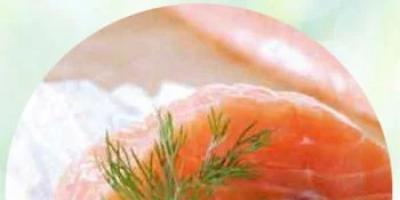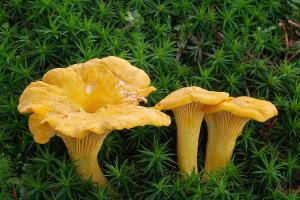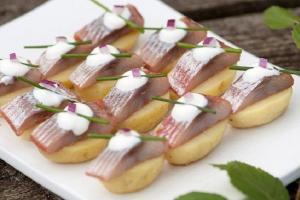Instant coffee has been popular all over the world for many years. Millions of people start the day with a cup of invigorating instant coffee - because you don’t need to grind it first and then brew it. Pour boiling water over it and you're done. People's recognition of this drink resulted in a separate holiday - Instant Coffee Day, which is celebrated on July 24.
The first examples of instant coffee were known in the middle of the 19th century. Thus, in No. 17 of the Tiflis newspaper “Caucasus” for 1852, “newly invented English-made COFFEE in bars, completely ready, convenient for consumption on the road and not subject to spoilage from cold or heat, and in bottles, in a kind of syrup” is offered for sale.
Instant coffee was invented and patented in 1890 by New Zealander David Strang. Also, a similar invention is attributed to the Japanese scientist Satori Kato, who worked in Chicago in 1901. In 1906, English chemist George Constant Washington, who lived in Guatemala, developed the first instant coffee suitable for mass production. In 1909, he introduced Red E Coffee, the first commercially produced instant coffee. It was only in 1938 that the first truly widespread brand of instant coffee appeared, Nescafe, as a result of the joint efforts of Nestle and the Brazilian government. These efforts were aimed at solving the country's coffee surplus problem. The product quickly gained popularity and spread throughout the world.
Instant coffee is not only a favorite drink for many, but also the basis of many different culinary masterpieces. It is used to make cakes and pastries, mousses and cocktails, sweets and lollipops.
They also paint pictures with it and make cosmetic face masks with it. In general, a universal product worthy of its own holiday!
July 24, 1374 is the founding day of the city of Vyatka, better known to us as Kirov. This date marks the first mention of the city, which until 1780 was called Khlynov.
In 1412, the famous battle between the Vyatichi and Ustyugans took place. The battle took place at night, in a ravine, later named Razderikhinsky. According to one version, the Ustyug residents came to the aid of the Vyatichi to defend themselves from the Tatars; according to another, they, in alliance with the Moscow princes, wanted to capture the city. In memory of those events, the Vyatka folk festival “Whiplash” appeared, and a chapel in the name of the Archangel Michael was built on the bank of the ravine.
In 1455, in Vyatka, for defensive purposes, a wooden Kremlin with an earthen rampart was built, which was given the name of the Khlynovitsa river flowing nearby. Subsequently, the name Khlynov spread to the township part of the city, and from 1457 the whole city began to be called Khlynov. In 1780, by decree of Empress Catherine II, the city was given the name Vyatka.
After the October Revolution, the council of supreme administration of the province declared non-recognition of the power of the Bolsheviks and the separation of the Vyatka province into an independent republic, which did not last long - on December 1, 1917, the Bolsheviks took power in the province into their own hands.
On December 5, 1934, in memory of Sergei Mironovich Kirov, the Presidium of the All-Russian Central Executive Committee adopted a resolution to rename the city of Vyatka to the city of Kirov and the formation of the Kirov Territory, which in 1936 became the Kirov Region.
So the history of the Vyatka land is rich and unique, as is the Vyatka cuisine. Vyatka cuisine reflects the historical overlap of several cultures - Russian, Mari, Udmurt, Tatar, Chuvash. The variety of Vyatka dishes is based on the multinationality of the region. Various elements folk recipes intertwined with each other and embodied in new dishes inherent specifically in Vyatka cuisine. Vyatka cuisine is an abundance of recipes with a large number of herbal dishes, simple field or garden dishes - sorrel, nettle, dill and others, with virtually no added spices. It is also distinguished by the numerous recipes for preparing tripe - liver, kidneys, lungs, stomachs and other animal entrails.
The names of traditional Vyatka dishes are very peculiar: grouse, tepnya, ishenka, podkogol, korovech, bobnitsa. Vyatka sauces for pancakes, which were called “pomakushi”, “komkom”, also add flavor to this cuisine. There is also “dozhinalnitsa” - milk soup with potatoes, “osedritsa” - stewed liver with potatoes, and many other extraordinary dishes. Indicative for the Kirov residents was the expression: “Vyatka is the mother of all bread,” since they always treated bread with respect and baked it a lot. And of course, everyone remembers the “kvass” that was promoted at the meeting with the president? - kvass! Vyatka kvass."
So, “in every region they love their own cooking”! Happy holiday, Kirov residents!
National Tequila Day in the USA.
Tequila is a strong alcoholic drink made from the blue agave plant. It is not for nothing that a special day is dedicated to this exceptional drink. After all, a huge number of stories, myths, legends and beliefs have circulated around tequila at all times. Some of them are close to the truth, some are just fiction. Here is a small selection of theories about tequila:
Bottles of quality tequila always have a worm in them. In fact, there were only a few of these bottles, and they were sold in the 40s. The worm had no practical purposes and did not influence anything other than interest in the drink itself. The worm marketing trick was created by the drink's producers to attract more customers. By the way, it wasn't even a worm; it was actually an agave moth larva.
In Mexico they drink tequila with salt and lime. This is wrong. It’s the Mexicans who drink tequila without diluting it or drinking it. The “lemon + salt” method is considered aimed at tourists, i.e. another marketing trick. This “tradition” itself was born in the 20s of the 20th century during the great flu epidemic. In the absence of antibiotics, Mexican doctors prescribed tequila with lemon and salt as a medicine - salt restores the balance of minerals, and alcohol and lemon are strong antiseptics. The combination was remembered and someone came up with the idea of giving it a touch of legend, which worked perfectly into the hands of the producers, creating a beautiful ritual.
The history of tequila supposedly began in the 8th century, when the Toltec tribe learned to make pulque from agave - fermented juice, essentially agave beer, a viscous and slightly foamy milky drink with a strength of 4 to 6 degrees. As the legend says, lightning struck the agave and split it into two halves, and nectar flowed from the core, which the Indians noticed and decided to use it for business. Pulque played such a prominent role in the life of the Indians that even the divine feathered serpent Quetzalcoatl, according to legend, loved this drink. Pulque even had its own god in Indian mythology - Ome Tochtli. Before colonization, pulque was the only Mexican alcoholic drink. The engine of alcohol progress was the Spanish conquistadors, who brought European technologies for distilling alcohol to the New World. History names the father of tequila as Don Pedro Sanchez de Tagli, Marquis of Altamira, who founded the first tequila factory in the Cuisillos hacienda in 1600. The popularity of tequila grew so quickly that already in 1608 the government introduced a special tax on its sale. The first manufacturer to receive an official license to produce and sell tequila in 1795 was Jose Maria Cuervo. The Jose Cuervo brand still exists and is rightfully considered the oldest in the world.
RAINBOW PEOPLE
The expression “scaring the crows,” that is, causing ridicule by wearing pretentious clothing, takes on a special meaning in the case of the Thai military. Once upon a time, guards dispersed noisy traders from squares during the day, and noisy birds at night. Simple people The guardsmen were called “makhat lek lai ka,” which can roughly be translated as “scarecrow corps.” Nowadays, guardsmen in bright, as if painted in Photoshop, uniforms participate in especially important ceremonial events and a parade in honor of the birth of the king.
Source: Rainbow People // Around the World. - 2020. - No. 2. - P.17.
GIVE THE RIVERS FREEDOM!

Based on an analysis of satellite images, Canadian geographers have calculated that of the 246 large rivers in the world (those are considered rivers longer than 1000 km), only 37% are not blocked by dams and have not turned into reservoirs. Mostly dam-free rivers are in the Arctic and some rivers in Africa. In total, 12 million kilometers of rivers were surveyed from satellites. The freedom of river flow is important for the environment, for maintaining fish stocks and the accumulation of soil along the coasts of seas, the water level of which is now rising.
In the photo: one of the largest dams in the world, built on the Yangtze River in China for the Three Gorges hydroelectric station.
Source: Give the rivers freedom! // Science and life. - 2019. - No. 12. - P.8-9.
TOP OF THE LOST WORLD

Mount Roraima, described in Conan Doyle's novel, is one of the oldest geological formations on Earth, which began to form about two billion years ago. You can get to the plateau that crowns the table mountain (tepui) only from December to March. The rest of the time it often rains, making it difficult to climb the dirt road-stairs. The Indians call Roraima the “navel of the Earth” and believe that the queen-goddess, the ancestor of people, lives at the top. The mountain is also called the “mother of all waters”: waterfalls fall from the top, giving rise to several rivers. Despite the winds, a huge cloud often hangs over the plateau, as if glued to the sky.
Source: Mernova, M. Top of the “Lost World” // Around the World. - 2019. - No. 12. - P. 21.
TURQUOISE PRINT

Jewelry for an Egyptian girl is a guarantee of a comfortable future. Jewelry is part of the mahr (bride price), the size of which is indicated in one of the articles of aqd zauwaj. This is what they call a marriage contract in Egypt. It is considered the main document confirming marriage. Mahr is divided into two parts. The first, muqaddam, is given by the groom at the time of engagement. Usually this Jewelry or the amount of money that is spent on their acquisition.
A mandatory element of a wedding dress is turquoise. This stone is considered a symbol of purity - the main requirement for a future companion. The second part of mahr is muahar. The groom usually deposits the agreed amount into the bride's bank account. In case of divorce, it remains with the woman. The spouses divide the property according to the law, according to which everyone takes what belongs to him. Therefore, when making large purchases during family life, they try to indicate on the receipt the name of the person who pays.
The marriage contract also stipulates whether a woman can receive an education, get a job and travel abroad.
Source: Daughters of the White Cloud // Around the World. - 2019. - No. 10. - P. 18.
A MUSHROOM IS WEIGHT IN GOLD

Australian scientists have discovered for the first time a fungus that metabolizes gold for its own benefit. A species of fungus, Fusarium oxysporum, takes from environment microparticles of gold and embeds them into its fibers. Exactly how the mushroom uses gold in its life is not clear, but in an environment containing gold, it grows several times better.
Gold is a practically inert metal: it does not react with other substances (with a few exceptions), almost does not oxidize, and therefore is useless for living organisms. It is so inert that it can be eaten - for example, in the form of gold leaf, which is used to decorate confectionery. But, as it turned out, in addition to people, there are other creatures on Earth who are not indifferent to gold. These are mushrooms.
It is not clear how exactly gold helps the mushroom in life. But it can benefit people. According to the authors of the study, it can be used as “beacons” of gold deposits.
Source: A mushroom is worth its weight in gold // Knowledge is power. - 2019. - No. 9. - P. 43-44.
DAUGHTERS OF THE WHITE CLOUD

Maoris greet guests not with a loaf of bread, but with a korowai. This is the name of the traditional New Zealand linen cape with black fringe. The higher the status of a person, the more the korowai is decorated with bird feathers. Kiwi feathers are considered the most expensive. Both the traditional pewpyu skirt and the pari top are woven from strips of linen by hand. Linen fabric is so dense that clothes made from it can be worn even at −10 °C. The traditional decoration of a Maori woman is an amulet made of pounamu (jade). Maori consider this green stone sacred. Often the amulet is made in the form of Tiki. This is what the Maori call the first person. The figurine resembles an embryo - a symbol of fertility. Back at the beginning of the 20th century, the main decoration of Maori women was the ta-moko tattoo; it was applied to the chin and cheeks using milk and a thin incisor. Nowadays similar patterns are applied with washable paint during the holidays.
Source: Daughters of the White Cloud // Around the World. - 2019. - No. 8. - P. 16.
GRAND ICE CREAM CAFE

The world's largest ice cream parlor is located in Havana, Cuba. Recently, the cafe, visited by 30 thousand customers every day, celebrated its fiftieth anniversary. It was built on the personal instructions of Fidel Castro, who was very fond of ice cream.
Source: Kunstkamera // Science and life. - 2019. - No. 7. - P. 62.
MYANMAR

The capital of traditional umbrellas is Pindaya. As in the last century, sun umbrellas are made in local workshops ancient technologies manually. The process is similar to cooking a dish. First, the paper tree fibers are dried and then boiled for 10 hours. The softened wood is beaten with mallets, again filled with water and dyes and beaten, as if with a whisk, with a stick with hooks. The resulting jelly-like mass is sent to a tray with a mesh bottom. Decor is laid out on top: flowers and leaves. Then the mesh is lifted and excess water is drained. The paper-flower mass, settled in an even layer on the lower part, is sent to dry. From the paper thus obtained, the umbrella panel is cut out and attached to reed knitting needles. The handle is made from bamboo. The ornament is drawn on finished products.
Source: One frame // Around the world. - 2019. - No. 7. - pp. 12-13.
LITTLE MOUSE

A tiny mouse, like Thumbelina, can feed on flower pollen. True, this is not her main food. Like an ordinary rodent, the baby's diet also includes seeds and insects. But, like the fairy-tale heroine, “half a grain a day” is enough for the mouse. This is the smallest European rodent. An adult can weigh only 4-6 grams.
Mice build themselves ball nests out of grass and hang them on plant stems. Intensively developing Agriculture gradually displaces the little ones from the fields. To preserve the population, animal activists in the UK came up with the idea of encouraging rodents to reproduce using tennis balls. Animal activists are receiving a share of the 36,000 tennis balls used at Wimbledon.
Source: One frame // Around the world. - 2019. - No. 5. - P. 12-13.
CLEAN AIR FOR BABIES
.jpg)
City air is especially polluted at a height of about 85 cm above the ground, and in most strollers the baby is forced to breathe air from this level, which contains 60% more pollution than the air breathed by the mother pushing the stroller. Pollution in the ground layer includes urban dust and car exhaust. In addition, the respiratory rate in young children is increased, and the protective mechanisms of the lungs have not yet fully formed.
Based on these results, one English company began producing air filter, which is inserted into the stroller and supplies purified air directly to the child’s face.
Source: Fresh air for the baby // Science and technology. - 2019. - No. 3. - P. 22.
BANGLADESH

The saying “get your sleigh ready in summer” has a special meaning for the people of Bangladesh. Before the monsoon season, people exchange cars for boats in advance. After heavy rains, when rivers overflow their banks, flooding nearby towns and villages, local residents can only get to work, schools and shops by water.
Hundreds of little ones wooden boats lined up for sale on the market. A handcrafted rowing boat costs around 1,800 Bangladeshi taka (about $22).
Source: One shot: Bangladesh // Around the world. - 2019. - No. 2. - P. 18-19.
MOON AND CHAMPAGNE

In 1957, after the launch of the first satellite, a certain French winemaker Henri Maire made a bet with the Soviet consul in France for a thousand bottles of champagne. The mayor argued that no one would ever be able to look at reverse side Moons.
On October 4, 1959, on the second anniversary of the launch of the first satellite, the Soviet Luna 3 station photographed the invisible side of the Moon and transmitted its images to Earth. The photos appeared on the front pages of newspapers around the world. The winemaker admitted that he was defeated, but our consul said that since he himself had nothing to do with the cosmic success, it was best to send the loss to the USSR Academy of Sciences. And on New Year's Eve 1960, a thousand bottles of champagne arrived in Moscow. The participants drank champagne with pleasure and many kept the bottle as a souvenir.
Source: Moon and champagne // Science and life. - 2019. - No. 1. - P. 107.
JAPAN

Hokkaido is one of the snowiest places in the world, but in winter not only ski lovers flock here, but also whooper swans. The island is home to the active Yotei volcano, hot springs and the largest caldera lake in Japan - Kussharo. Because of underground heat Part of the lake is not covered with ice for a long time, so every year hundreds of birds wait out the cold here.
Source: One shot: Japan // Around the world. - 2019. - No. 1. - pp. 12-13.
PINK SNOW

The bright aroma of watermelon in the mountains is not a hallucination. The snow in California's Sierra Nevada actually has not only the smell, but even the color and taste of watermelon. True, eating this strange “dessert” is still not recommended. The waste products of unicellular algae (Chlamydomonas snowy) give the snow cover its resemblance to a watermelon. The stronger the sun shines, the brighter shade and the taste of snow.
Algae, which are green in nature, change color in response to ultraviolet rays: in addition to green chlorophyll, the red pigment astaxanthin is formed in the cells. “Watermelon” algae are frost-resistant and can multiply quickly, turning huge amounts of snow into pink clouds.
Source: Mountain watermelons // Around the World. - 2018. - No. 12. - P. 24.
WHERE IS THE STATE HIDING?

Rome, the “eternal city”, founded in 752 BC, the capital of the Roman Empire and modern Italy, is also a city-museum, decorated with many architectural monuments, the construction of which was carried out by brilliant craftsmen and brilliant architects of antiquity and the Middle Ages, the Renaissance and baroque. This - by our standards - is not a very big city, where 2 million 875 thousand people live, but also hides an entire state. Part of the territory of Rome is occupied by the Vatican - the seat of the head of the Catholic Church, the Pope. So, Rome can be called the capital of two states in a row.
Source: Little by little about many things // Knowledge is power. - 2018. - No. 10. - P. 57.
PURE CASTE

A gold nose ring, mukuthi and a string of pearls are the minimum jewelry that even a representative of the lowest varna of sudras allows herself. Decorations for Indian girls more important than the outfit. Unmarried women often wear mukuthi in the form of small studs. On the wedding day, the bride wears a heavy earring with precious stones in her nose. For married women- medium sized rings.
Young people choose their future wife based on her build: in India, it is believed that only a plump beauty with white teeth can give birth to healthy children and work well.
Source: Pure caste // Around the world. - 2018. - No. 10. - P. 18.
LIBRARY LADDER
(Great Britain) - tight-fitting slippers made of soft leather - the uniform footwear of Scottish and Irish dancers. They feature long laces that often wrap around the foot and ankle. Scottish gills are usually black, but can be decorated with colored stitching and eyelets. Dancers usually wear them with high thin socks. ESPADRILLES
(Spain) - summer slippers with a canvas upper and flexible rope sole. In the early 14th century they were described as shoes of Catalan peasants, but the French name became popular around the world. Perhaps thanks to Yves Saint Laurent, who developed the wedge-shaped model in the 1970s. Anyway, 90% of these slippers are made in Bangladesh today.
ESPADRILLES
(Spain) - summer slippers with a canvas upper and flexible rope sole. In the early 14th century they were described as shoes of Catalan peasants, but the French name became popular around the world. Perhaps thanks to Yves Saint Laurent, who developed the wedge-shaped model in the 1970s. Anyway, 90% of these slippers are made in Bangladesh today.
 HAFERLSHU
(Germany) - According to legend, the Alpine shoemaker Franz Schratt in the early 19th century was inspired to create these boots by goat hooves. Shoes for working in mountainous areas were supposed to be strong. For reliability, their soles were padded with nails. Today they look completely urban. And they wear them with pleasure both during Oktoberfest and on weekdays.
HAFERLSHU
(Germany) - According to legend, the Alpine shoemaker Franz Schratt in the early 19th century was inspired to create these boots by goat hooves. Shoes for working in mountainous areas were supposed to be strong. For reliability, their soles were padded with nails. Today they look completely urban. And they wear them with pleasure both during Oktoberfest and on weekdays.
 CLAMPS
(Netherlands) - these wooden shoes are the main tourist souvenir, historical relic and cultural symbol at the same time. The oldest klomp found dates back to 1230. Once upon a time, all Dutch people wore clogs. Nowadays only gardeners and vegetable gardeners wear these shoes. Nevertheless, about three million pairs of clogs are produced per year.
CLAMPS
(Netherlands) - these wooden shoes are the main tourist souvenir, historical relic and cultural symbol at the same time. The oldest klomp found dates back to 1230. Once upon a time, all Dutch people wore clogs. Nowadays only gardeners and vegetable gardeners wear these shoes. Nevertheless, about three million pairs of clogs are produced per year.
 GRANDMONS
(Morocco) - Street slippers, common for characters oriental tales, made of high-quality fabric or thin leather with pointed, often turned-up toes, without a heel. They are often decorated with intricate embroidery, ribbons, and precious stones. Babushi is the main souvenir from Morocco.
GRANDMONS
(Morocco) - Street slippers, common for characters oriental tales, made of high-quality fabric or thin leather with pointed, often turned-up toes, without a heel. They are often decorated with intricate embroidery, ribbons, and precious stones. Babushi is the main souvenir from Morocco.
 JUTTI
(India) - Elaborately embroidered leather slippers with flat soles are often not divided into left and right: they simply mold to the shape of the foot. The men's and women's versions differ little, but men's juttis come with widened rounded toes. Usually the type of slippers depends on the specific region, and sometimes on the craftsman.
JUTTI
(India) - Elaborately embroidered leather slippers with flat soles are often not divided into left and right: they simply mold to the shape of the foot. The men's and women's versions differ little, but men's juttis come with widened rounded toes. Usually the type of slippers depends on the specific region, and sometimes on the craftsman.
 GETA
(Japan) - Wooden sandals with two “heels”, or one in the middle of the foot, or on a platform were conceived for the rainy season so that the feet did not get dirty or wet. These shoes are an essential part of a professional geisha costume.
GETA
(Japan) - Wooden sandals with two “heels”, or one in the middle of the foot, or on a platform were conceived for the rainy season so that the feet did not get dirty or wet. These shoes are an essential part of a professional geisha costume.
 UNT, TORBASA
(Russia) - One of the most warm species shoes in the world. Different peoples of the Far North have analogues of these boots with slight regional differences. The Nanais and Udeges call them Torbass, the Evenks and Yakuts call them Unts. They are sewn with fur inside or outside, with rubber, leather or felt soles; dog or deer fur is used. Previously, such boots were worn by Soviet pilots in winter, including during the Great Patriotic War.
UNT, TORBASA
(Russia) - One of the most warm species shoes in the world. Different peoples of the Far North have analogues of these boots with slight regional differences. The Nanais and Udeges call them Torbass, the Evenks and Yakuts call them Unts. They are sewn with fur inside or outside, with rubber, leather or felt soles; dog or deer fur is used. Previously, such boots were worn by Soviet pilots in winter, including during the Great Patriotic War.
We bring to your attention a selection of interesting facts: about banknotes, expensive wine and poor majors from South Africa. This is really interesting.
IN South Africa there is a strange subculture of burning money - izhikotan

Why expensive wine is a waste of money

Luckily for our wallets—and our taste buds—the authors of Think Like a Weird present an experiment that shows one thing: Even if an expensive wine is better, many of us simply won't be able to tell.
The book, a follow-up to the popular Freakonomics, tells the story of one of the authors' experiences, Levitt, as a member of the Harvard Society of Fellows, where doctoral students conduct their research and meet once a week for a formal dinner with senior fellows.
Wine, the book explains, was a key part of these weekly dinners and came from the society's vast and expensive wine cellars. It happened that the dinners were attended by members of society who were connoisseurs of wine and who were confident in the superiority of expensive bottles of wine.
To challenge this arrogance - and in hopes of lowering the cost of dinners - Levitt took with him two expensive vintages from the cellar and the cheapest bottle of wine from the same grape variety that he could find (it cost about 1/10 the price of other bottles) and conducted a tasting There were four glasses of wine: two contained the same expensive wine, one contained another type of expensive wine, and the last one contained cheap wine.
Levitt detailed the results on the Freakonomics blog:
“For me, the results couldn't have been better. There was no significant difference in the ratings of the four wines: the cheap wine was rated as highly as the expensive one. Even more remarkable, for the taster, the difference between the two servings from the same bottle was greater than between the other two samples. Not only did they like cheap wine as much as expensive wine, but they were not even consistent in their judgments.”
Levitt and his co-author Stephen. J. Dubner admitted that this experiment was not entirely scientific. But then again, that might be enough to ease your worries when you choose a $50 bottle over a $15 bottle.
Breaking an Australian $10 bill in half creates two legal $5 bills.

If you tear any Russian banknote into two parts, it will no longer be legal tender, even if glued together: it can only be exchanged at the bank for a new one. Other rules in Australia: the value of a portion of any note whose area is not less than 20% and not more than 80% of the original note is proportional to the value of the original note. Given that Australia's banknotes have been made of thin plastic rather than paper since 1988, if you break a $10 bill in half, you'll get two $5 bills.
Having a goal prolongs life

Everyone knows that such a quality as determination is necessary for a person, but as it turns out, having a goal not only fills life with meaning, but can also increase its duration - this is confirmed by joint research by American and Canadian specialists.
Led by Patrick Hill of Carleton University and Nicholas Turiano of the University of Rochester, the researchers studied the life paths of more than 7 thousand Americans aged 20 to 75 years. Using various tests, experts determined the psycho-emotional state of the participants and their attitude to life, and then over the course of 14 years they observed how life attitudes affected the health of the experimental subjects. At the same time, it turned out that people who have difficulty imagining why they wake up in the morning, as a rule, experience more problems with health and die earlier than purposeful and energetic individuals - among the 569 Americans who died during the experiment, the percentage of pessimists and those who could not decide on the meaning of their life was noticeably higher than in the sample as a whole.
According to Patrick Hill, four types of the most common global life goals and attitudes can be distinguished - creative ambitions, professional (also financial), social and family. The researcher is confident that moving towards any goal has a beneficial effect on a person’s sense of self and his life expectancy - be it the desire to achieve success in sports, the desire to write a book or become the president of a country. According to the results of the experiment, the positive effect of setting goals and achieving them does not depend on a person’s age - in other words, even if a 70-year-old man suddenly feels an interest in painting and starts painting, his chances of longevity will increase.
Of course, it is hardly possible to talk about a direct cause-and-effect relationship between ambitions and life expectancy - determination makes you take more responsibility for your own health, in particular, it reduces the risk of developing bad habits and promotes the active socialization of a person, which also has a beneficial effect on the mental and physical state.
What does drowning really look like?

On TV or in we often see drowning people - almost always the victim on TV begins to splash and call for help. Because of this incorrect description, we risk not even noticing that the person next to us will drown.
Of course, this does not mean that if a person waves his arms in the water, raises splashes and calls for help, then he does not need rescue - on the contrary, he just shows that he really needs help. But at this moment he is not actually drowning yet, and there is still enough time to save him.
A person who actually drowns will behave in accordance with the so-called instinctive response of a drowning person. This behavior was described by Dr. Francesco Pia and aviation rescuer Mario Vitton in the official journal of the US Coast Guard.
When a person drowns, his mouth and nose are submerged under water - because of this, he receives less and less oxygen, which he can only inhale if his head is above the water. The need to take a breath of air will instinctively become more important than the desire to call for help, so that all a drowning person can do when his head appears above the water is inhale.
He won't wave his arms either - his hands will be too busy trying to somehow keep his mouth above the water. Most drowning people unconsciously press on the water, as if trying to find support or climb an invisible ladder. The person will remain upright with their head tilted back. A drowning person will most likely not use his legs to rise to the surface of the water.
To an inexperienced observer, it will seem that the swimmer is simply frolicking in the water, but if a person behaves in a similar way, then, most likely, he is about to drown. Once it starts, the victim has 20 seconds to a minute before going under. It is very likely that a person will die if help does not arrive in time.
Boldino autumn of Pushkin
HERITAGE. THE MYSTERY OF BOLDIN AUTUMN
“I’m only happy with her alone...!” Who is Pushkin about? Who is this one - the bride or the muse? No, this is about Autumn.
Autumn is a blessed, beautiful, poetic time of farewell to summer - “the quiet nature of fading.” And in Russian literature, all admirers of the great poet Alexander Sergeevich Pushkin know “Boldino Autumn” - this is the golden, favorite, inspired time of the year, this place is a huge secret, a miracle, the heyday and culmination of the poet’s life and work, this is the golden time of Russian poetry.
Having been “visiting Pushkin,” you can walk where he walked, see what he was looking at, try to catch this autumn, when fingers ask for pen, pen for paper, feel this Boldino air, from which day after day comes to him were the Bronze Horseman, Eugene Onegin, the Queen of Spades, Belkin's stories and all Pushkin's fairy tales. Here are two crucian carp from a local pond - still his goldfish that can read.
The Boldino autumn of 1830 gave Russian literature the best works of A.S. Pushkin. It’s interesting that it happened completely by accident - while preparing for the wedding with Natalya Goncharova, the poet went to Boldino to decide some financial questions, and intended to stay there for a week at most, but the outbreak of a cholera epidemic forced him to stay in the village for almost the entire autumn. It so happened that these three months became the most fruitful for his work. The phenomenon of Boldinskaya autumn in Pushkin’s work is surprising in the ratio of the number of texts created and the timing of their writing - Alexander Sergeevich created one work after another with incredible speed. Such inspiration pleased the poet, and he did not miss the opportunity to use it. In Boldino, Pushkin mastered a variety of genres and forms, experimented with vocabulary, and combined folk and literary forms. Unfortunately, Pushkin later failed to finish and implement much of what he started and planned in Boldino.
About thirty poems were written in Boldino, among them “Demons”, “Elegy”, “My Genealogy”. In addition, the novel in verse “Eugene Onegin” was completed here and the poem “Gypsies” was written. In general, the theme of the poems of the Boldino period comes down to memories of the past and impressions of the present. In addition, it was here that Pushkin began to try his hand at folk genres - for example, “The Tale of the Priest and his Worker Balda” was created here and “The Tale of the Bear” was begun, which was never completed.
As for prose, it was here that Belkin’s Tales were born. Pushkin, as you know, never adhered to strict genre boundaries; he loved to experiment and create in different directions, and this cycle is proof of that. "Belkin's Tales" contain works of different literary trends and genres that were popular at that time: realism ("Shot"), sentimentalism ("Blizzard"), vaudeville ("The Young Lady-Peasant"), gothic story ("Undertaker") . Moreover, all works have a feature that is inherent in critical realism: “little people” often appear in them, and the conflict develops at the lowest levels of the social ladder.

In Boldino, Pushkin tries his hand at drama and creates “Little Tragedies.” Small in volume, they are intimate in nature: they have few characters, they have a dynamically developing plot and an acute, irreconcilable conflict that ends, according to the law of the genre, with the death of the hero. At the heart of the conflict are the strongest human passions, which, if uncontrolled, can lead a person to death. In “The Stingy Knight” it is stinginess, in “Mozart and Salieri” it is envy, in “The Stone Guest” it is love passion. In this sense, “A Feast in the Time of Plague” differs from other tragedies, since it does not focus on any one passion, however, this tragedy completes the cycle and is a kind of generalization - it resolves the pressing issues of the existence of a person who looks death in the eyes . Here death is not a consequence of the conflict, but its cause. There is no explanation for the fact that the innocent and righteous are dying along with bandits and sinners - the epidemic is blind.
The Boldino autumn can be considered the clearest example of creative upsurge, the sudden appearance of inspiration as a result of a random coincidence. This phenomenon is difficult to explain, but it is better to simply enjoy its results - the best works of literature.

Wonderful time Boldino autumn. But the everyday storms in the Pushkin family and the tragic denouement are not so far away, only about three years. He was not destined to enter the autumn of his genius; he died young. But the Boldino autumn became, in the full sense of the word, the golden autumn of humanity, and not just of Russian literature.

For more than a century and a half, “the people’s path has not overgrown” to all the corners, houses, towns and villages where the great Alexander Sergeevich Pushkin lived and worked, including in Boldino. A unique phenomenon, a real miracle, is that the Boldino estate survived all the peasant riots, the revolution, collectivization, and two wars. And since 1949, the State Museum-Reserve was created in Boldin, which includes the house-museum where the greatest poet of Russia lived and worked, and later the descendants of his brother lived, the building of a former serf office, a manor park with a garden and two ponds, as well as a grove Luchinnik is the poet’s favorite walking place.








